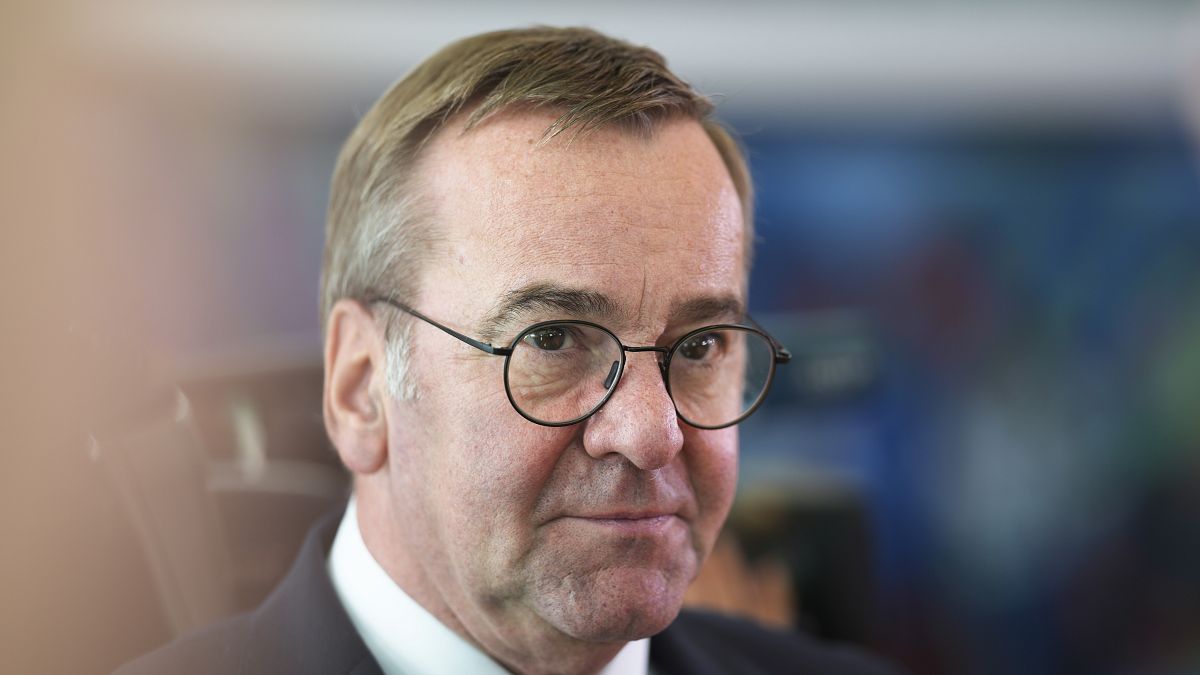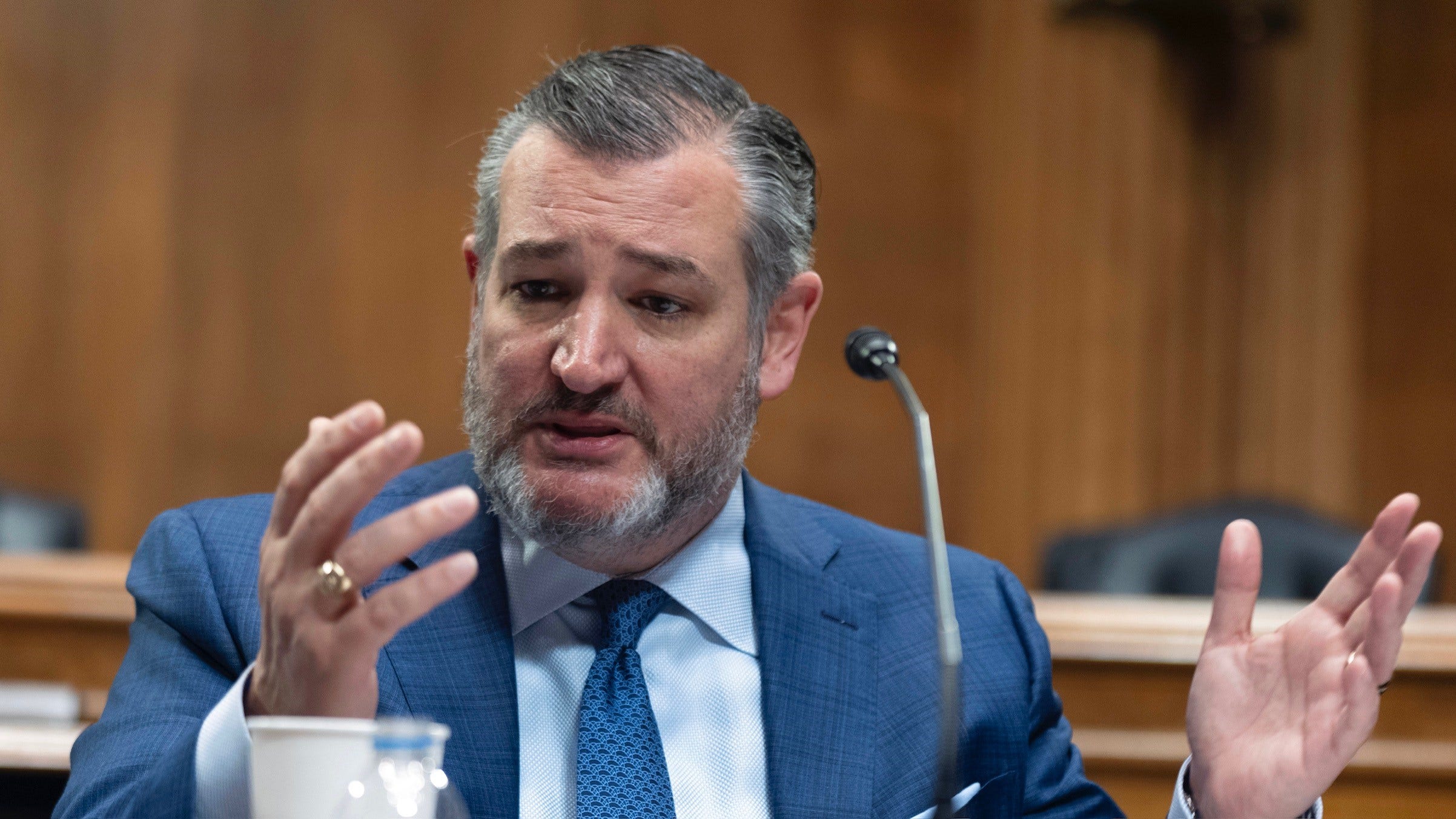Oregon
State struggles to recover more than $24 million from people responsible for wildfires • Oregon Capital Chronicle

Each year, the Oregon Department of Forestry responds to about 1,000 wildfires across the 16 million acres of land it protects. It investigates the cause of every fire, and if a person or group is found to have been negligent or malicious in starting or spreading a significant fire, the agency pursues reimbursement for its firefighting costs.
The agency has not been very successful in recouping those costs, according to a report discussed at a March meeting of the four-member Emergency Fire Cost Committee.
The account offered a rare glimpse into the scale of the costs and the efforts to recover them. But it only represented a snapshot of the problem, excluding a full list of all the fires the state is investigating or pursuing for reimbursement, Jessica Neujahr, a forestry spokesperson, said in an email.
“That larger list is not one we can share,” she said, due to ongoing litigation and privacy concerns.
The report showed the forestry department spent at least $24 million to respond to 36 significant fires caused or spread negligently or maliciously by people or groups since 2004, and that in pursuing reimbursement, it has collected just $86,000 from “responsible parties.”
Few people who have started significant wildfires have millions of dollars to reimburse the department and sometimes investigating who is responsible, or trying to collect the money, can become too costly, according to Tim Holschbach, chief of policy and planning with the department’s fire protection division.
In those cases, the department moves on.
“We don’t want the effort to exceed the payback,” Holschbach said. “It wouldn’t make sense for us to spend taxpayer money to pursue recovery from someone who can’t pay.”
With climate change, wildfire seasons are becoming longer and often more destructive, affecting communities, infrastructure and land needed for grazing and farming. This year’s season, which is expected to end this month, scorched nearly 2 million acres across the state, setting a new record. Some of the fires were quickly put out, but others burned for weeks. The primary cause of wildfires this year was lightning strikes.
The agency considers a “significant” fire to be one that costs over $5,000 to fight, with the agency pursuing those it considers to have started or contributed to the blaze either willfully or through negligence, Neujahr said.
The agency listed 36 fires since 2004 that were willfully or negligently set in its report to the committee. It has accepted $86,000 in settlements and restitution for 17 of the oldest fires and is actively trying to recoup at least $15 million for 19 that started since 2011. It is also investigating 21 significant fires that occurred between 2020 and 2023 in an attempt to recover at least some of the $88.5 million spent to snuff them out. Agency officials don’t yet know whether they’ll identify a culprit to pursue for reimbursement in each case, Neujahr said
The Legislature recently voted to send the forestry department $47.5 million in emergency funding to help pay bills from fighting the current fire season, which has already cost the state $250 million.
Deciphering the cause
In investigating fires, state forestry officials first identify the point of origin, according to Holschbach. If they discover a tree slashed with a big black scar, they know the cause was probably lightning, or if a burn barrel used to burn trash is nearby, they know humans were likely involved. But other investigations are more difficult.
If they determine that someone is responsible and identify the party, officials send them a letter outlining the costs and demanding payment. That person has 90 days to respond to the letter before interest on the bill starts to accrue. If the culprit refuses to pay, the forestry department notifies the Oregon Department of Justice to determine other methods of collecting, Neujahr said.
Investigations can take years depending on how many people and federal agencies are involved, or how complex the case is, Holschbach said. The agency’s investigation also has to be able to stand up in court.
“We treat every investigation as if we’re preparing for litigation,” Holschbach said, adding that people have become increasingly litigious.
“We have to be more careful in our documentation, and more complete than we ever have been, and doing that really slows things down. Not that we were reckless before, or didn’t have complete reports, but it’s just more complex,” he said.
Working with federal agencies can slow things down, too.
The agency is still waiting for the U.S. Forest Service to complete its investigation of the Two Four Two Fire in 2020 near the Williamson River Campground in Klamath Falls, which burned more than 2,000 acres. The state agency is also still waiting on the forest service to finish its part of the investigation on the 2020 Holiday Farm Fire near Eugene that burned more than 173,000 acres and was one of the largest wildfires in Oregon history.
Firefighting costs
Every two years, the state sets the forestry department’s firefighting budget. The agency also collects fees from owners of the private land it protects, about three-quarters of the total 16 million acres. Those fees go into the Oregon Forest Land Protection Fund to help defer wildfire costs. It also helps to fight fires on federal land, and pays those costs upfront, but is reimbursed by the federal government.
Emergency fire costs that go beyond the biennial firefighting budget are paid by revenue from two sources, depending on the amount. Up to $20 million of emergency fire costs are split between the protection fund and Oregon’s general fund, which is used for a wide range of expenses and mostly comes from Oregon income taxes. Costs beyond $20 million are paid entirely by the general fund, Holschbach said.
When the department collects reimbursements, most of the money goes back to the general fund.
“The point of cost recovery is to take the burden off the taxpayer – off of Oregonians,” said Neujahr, the forestry department spokesperson. “If we can get that money back to the state, that’s the goal.”
But very little has been reimbursed. Agency officials said they drop investigations that become too complex and costly to pursue or when there’s little hope of recovering the money.
One example is the Sweet Creek Milepost 2 fire that started in Lane County in 2020 and cost more than $4 million to fight. In the end, the arsonist who was charged was only able to pay $154 to the forestry department.
In another fire – that was not included in the March report – the department recovered $200,000 after spending $37 million putting it out. The 2015 Stouts Creek Fire in Douglas County, which spread across 26,000 acres, was started by a guy mowing his lawn during a restricted period of hot and dry conditions. The department only recovered $200,000 because that was the limit on his homeowners insurance policy.
Many fires, like this one, could have been avoided with better judgment, Holschbach said.
“About 70% to 80% of fires are human caused, but most of those are not willful, malicious or negligent,” Holschbach said.
But they’re often expensive to put out – for the department and those found responsible.
Holschbach said those high costs are part of the reason the agency has launched campaigns to make the public more aware of mowing and debris burning restrictions.
“Don’t cause a fire. Don’t go there. Because you may end up paying for it,” he said.
GET THE MORNING HEADLINES.

Oregon
Oregon to reinstate ambitious climate program amid divided reactions from industries, environmentalists

Oregon’s ambitious carbon emissions reduction program is restarting once again.
The program is set to start for a second time in January — after a court of appeals invalidated the state’s first attempt at the Climate Protection Program late last year.
Most industries the program regulates are not happy with the new rules, while environmental organizations celebrated the reinstatement of the program, saying Oregon is now back on track to reduce emissions from the state’s largest polluters.
On Thursday, the Oregon Department of Environmental Quality’s commission voted to unanimously adopt a revamped version of the Climate Protection Program. The program’s main goal is to reduce 90% of carbon emissions from diesel, gasoline and natural gas companies by 2050. The first benchmark regulated entities must comply with is a 50% carbon emission reduction by 2035.
“Oregon is committed to acting boldly and consistently to do our part to protect our climate,” Gov. Tina Kotek said in a press statement. “The Climate Protection Program will keep polluters accountable and fund community investments that will reduce greenhouse gas emissions in Oregon.”
FILE – Thousands of area youth climate activists and supporters marched through downtown Portland, Ore., May 20, 2022, as part of a youth-led climate mobilization demanding city leaders take meaningful action on climate change.
Kristyna Wentz-Graff / OPB
DEQ’s Climate Protection Program is one of the strongest emission reduction programs in the nation. Agency staff have touted the program as “foundational” in helping other state mandates, like electric utilities having net-neutral carbon emissions by 2040, “pick up the slack” to help reduce the state’s overall greenhouse gas emissions.
But the idea of a cap-and-trade program, like the CPP introduces, has been a controversial issue in the state for many years. Republican lawmakers shut down the Oregon Legislature two years in a row to stop majority Democrats from passing a cap-and-trade bill.
An earlier version of the program was also criticized, as fossil fuel groups regulated under the program sued to block it entirely in early 2022. The Oregon Court of Appeals invalidated the program last December, citing procedural technicalities.
Now, the program, which was updated after undergoing a second rulemaking process, is set to start once again in January, with a few changes.
Those include regulating heavy carbon emitters and direct natural gas users, working with the Oregon Public Utility Commission to monitor natural gas rates and adjusting compliance periods to give companies more flexibility.
“This program maintains Oregon’s commitment to addressing climate change, transitioning our economy to remain globally competitive, and investing in our most impacted communities across the entire state,” DEQ’s Environmental Quality Commissioner Chair Matt Donegan said in a statement.
Regulated entities will have three years, starting in 2025, to make adjustments to be in compliance with the new rules. After that, the compliance periods will be two years.
Hitting restart
After DEQ decided not to appeal the court decision that invalidated the program, the agency began a second rulemaking process in March. DEQ fast-tracked the process using the same framework that led to its previous rules. It took more than 20 months to develop the first attempt at a Climate Protection Program, which gathered more than 7,000 public comments and was guided by an advisory committee.
This time around, the agency received more than 10,000 public comments, the most the agency has ever received during any public comment period. That input, and a 26-member advisory committee, helped shape the new rules.
Oregon drafts a reboot of the state’s flagship climate program
But not everyone is happy with the result.
Bill Gaines, executive director of the Alliance of Western Energy Consumers, said there were meaningful discussions about the proposed changes to the program, but there needs to be more protections for consumers as well as businesses that compete regionally and globally.
In comments submitted to the agency from the group in late September, the AWEC wrote, “maintaining a vibrant, growth-oriented economy is not mutually exclusive with the policy of reducing greenhouse gas emissions. The proposed CPP rules, however, will produce major, negative impacts on natural gas consumers, with the greatest impacts on the high-volume gas consumers that are the cornerstone of the State’s economic vitality.”
A blue flame burns on a natural gas stove.
Cassandra Profita / OPB

Gaines said although there was an improvement in the final draft rules for the recently added Energy Intensive Trade Exposed members, the new rules will be costly for Oregon’s natural gas customers. AWEC estimates companies that would be regulated under the new rules would have to pay millions of dollars to comply with the program to keep using natural gas at current rates. That could lead some businesses to leave Oregon, he said.
Gaines also said the group is still questioning whether DEQ has the authority to implement the program.
DEQ has said the agency has full authority to establish and enforce the program
Other regulated companies like NW Natural say it appreciates changes to delay program elements for a small percentage of their customers.
NW Natural was one of the fossil fuel companies that sued to halt the program in 2022.
But Spokesperson David Roy said “the overall negative cost impacts to Oregonians remain, as do our concerns about the accountability for this program to reduce greenhouse gas emissions.”
Roy was referring to the Community Climate Investment carbon credit program. If regulated entities choose to not lower their emissions, they can buy credits at the cost of $129 per ton of greenhouse gas pollution.
DEQ to start over with Climate Protection Program after Oregon Court of Appeals decision
Under the new rules, DEQ will work with the Oregon Public Utility Commission to evaluate and mitigate significant rate increases many natural gas customers may see due to compliance costs.
Roy said higher carbon credit costs could still impact their customers like hospitals and schools, because they “are still stuck with the most expensive cost of carbon of any program in North America.”
But not all regulated entities are unhappy with the second version of the rules.
Mike Freese with the Oregon Fuels Association said the adjustments made to the final rules governing the transportation industry are workable.
“Oregon’s local fuel sector was critical in lowering greenhouse gas emissions below the aggressive greenhouse gas reduction goals under the prior CPP program,” he said. “We appreciate DEQ recognizing these investments in the rule to help ease impacts on consumers. While the recently adopted CPP rule is an improvement, lawmakers need to carefully monitor this program to ensure Oregonians have access to affordable fuel in all parts of the state.”
During the first two years of compliance under the first version of the Climate Protection Program, the regulated industries reported a reduction in their emissions beyond what was required under the program.
As DEQ underwent the second rulemaking process, the agency said that some industries, like fuels suppliers, were reducing their emissions to beyond what was required to meet the cap with the previous rule. So DEQ is granting those companies additional carbon credits that represent what they would have banked under the first version of the program.
‘Beacon of hope’
The reinstatement of the program puts Oregon back on track to reduce greenhouse gas emissions and invest in communities hit the hardest by climate change, a coalition of environmental groups said.
“Oregon’s actions today are a beacon of hope,” Oregon Environmental Council executive director Jana Gastellum said in a statement. “Every state deserves a program like the Climate Protection Program to not only cut pollution but also generate funds for community projects and business innovation. It’s a win for the people, especially those in frontline communities who’ve long been impacted by climate change.”
Oregon Court of Appeals finds state carbon reduction rules invalid
The Community Climate Investment credits would go toward projects like creating more renewable energy and retrofitting and weatherizing buildings, which would reduce carbon emission within the state’s most vulnerable communities. The program’s aim is to reduce air pollution and improve public health and help communities transition from fossil fuels to cleaner energy.
DEQ has refined what type of projects will be eligible, and the new rules ensure 15% of the funds received will benefit tribal communities in Oregon.
“This holds polluters accountable while uplifting community-led solutions,” Xitlali Torres, air quality and climate program coordinator at nonprofit environmental group Verde, said in a statement. “It directly addresses the harmful pollution that burdens low-income communities of color while building cleaner air, safer homes, and a livable future for all.”
But the implementation of the Community Climate Investment program, which was almost ready to launch when the first version of the Climate Protection Program was ruled invalid, will be delayed under the plan approved Thursday.
DEQ will restart the process of selecting an entity to implement the program and expects the program to be in place by the end of 2026.
Oregon
Who was the 2024 Transfer of the Year in Oregon high school football?

Dozens of Oregon high school football players transferred from one school to another during the 2023-24 offseason. SBLive Oregon combed through those transfers and selected 16 of the best to highlight. Vote for your top choice in the poll at the bottom of the page.
Earlier: Is transfer culture ruining high school football? Oregon coaches weigh in
Aguilar dominated at the 4A level for Milwaukie last season, and that performance translated to the 6A Mt. Hood Conference, where Aguilar was voted to the all-conference second team.
Ayers moved north from Roseburg and led the resurgent Wolverines with 1,074 rushing yards and 13 touchdowns on 173 carries.
The transfer from Springfield had a major impact on the Lancers’ Midwestern League title march, winning league defensive player of the year honors and earning second-team all-league honors as a backup tailback.
Buzzard was a two-time wrestling state champion and top linebacker for Harrisburg. He made an instant impact with the Spartans, leading them with 85 tackles and making the all-Oregon West Conference first team.
Brasfield moved across town from Corvallis and teamed with freshman quarterback Zeke Thomas as one of the most potent passing combos in the state, catching 90 passes for 1,335 yards and 19 touchdowns.
The ex-Crescent Valley standout helped lead the Titans to the 6A playoffs, earning first-team all-South Central Football Conference honors.
Craigwell came from Sunset and was a first-team all-Three Rivers League inside linebacker (34 tackles, three for loss) for the league champions.
The University of Oregon commit was as good as advertised coming to the Willamette Valley from the Arizona desert, leading the team in tackles for loss.
Eddleman joined older brother Treyson in coming from Sherwood and shined during his first season with the Pacers, recording a team-best 62 tackles and two sacks and making the all-Three Rivers League first team.
Hoffert arrived from Central Catholic and was one of the top players on the Generals defense, making the all-PIL first team.
Ingle returned to the Lions after spending his junior season at Wilsonville and fit right back in on defense, making the all-Three Rivers League first team with 40 tackles (five for loss) and a team-high three sacks. He rushed for six touchdowns.
Kurland arrived from Sunset and quickly took over the starting job, throwing for 1,143 yards and 11 touchdowns with one interception and completing 67.6% of his passes (71 of 105). He led the Lakers to the No. 1 seed in the 6A Open playoffs and was voted to the all-Three Rivers League second team.
Martin joined the program after starring at Gaston last year and has shined in all three phases (1,417 all-purpose yards, 17 touchdowns, 24 tackles, four interceptions).
Martirano was a 6A all-state selection at West Salem, and after winning Mid-Willamette Conference offensive player of the year honors (2,150 passing yards, 18 touchdowns; 417 rushing yards, 14 touchdowns), he’ll likely make the 5A all-state team this fall.
The late arrival from Riverside County in California quickly melded with his teammates, showing why he’s a rising prospect and finishing with 1,503 passing yards and 15 touchdowns.
Smith was already well-known as a standout receiver at Central Catholic, but with the Timberwolves, he became a two-way all-Three Rivers League first-team selection, catching 33 passes for 609 yards and seven touchdowns and making 22 tackles at safety.
To get live updates on your phone — as well as follow your favorite teams and top games — you can download the SBLive Sports app: Download iPhone App | Download Android App
Oregon
High wind watch issued for Oregon for Friday

On Thursday at 3:35 a.m. a high wind watch was issued by the National Weather Service valid for Friday between 10 a.m. and 10 p.m. for Clatsop County Coast, Tillamook County Coast and Central Coast of Oregon.
The weather service describes, “South winds 25 to 35 mph with gusts up to 60 mph possible for beaches and headlands.”
“Damaging winds could blow down trees and power lines. Travel could be difficult, especially for high profile vehicles,” explains the weather service.
Advance Local Weather Alerts is a service provided by United Robots, which uses machine learning to compile the latest data from the National Weather Service.
-
Business1 week ago
Column: OpenAI just scored a huge victory in a copyright case … or did it?
-

 Health1 week ago
Health1 week agoBird flu leaves teen in critical condition after country's first reported case
-

 Business5 days ago
Business5 days agoColumn: Molly White's message for journalists going freelance — be ready for the pitfalls
-
World1 week ago
Sarah Palin, NY Times Have Explored Settlement, as Judge Sets Defamation Retrial
-

 Politics4 days ago
Politics4 days agoTrump taps FCC member Brendan Carr to lead agency: 'Warrior for Free Speech'
-

 Science2 days ago
Science2 days agoTrump nominates Dr. Oz to head Medicare and Medicaid and help take on 'illness industrial complex'
-
/cdn.vox-cdn.com/uploads/chorus_asset/file/25739950/247386_Elon_Musk_Open_AI_CVirginia.jpg)
/cdn.vox-cdn.com/uploads/chorus_asset/file/25739950/247386_Elon_Musk_Open_AI_CVirginia.jpg) Technology4 days ago
Technology4 days agoInside Elon Musk’s messy breakup with OpenAI
-

 Lifestyle5 days ago
Lifestyle5 days agoSome in the U.S. farm industry are alarmed by Trump's embrace of RFK Jr. and tariffs
















